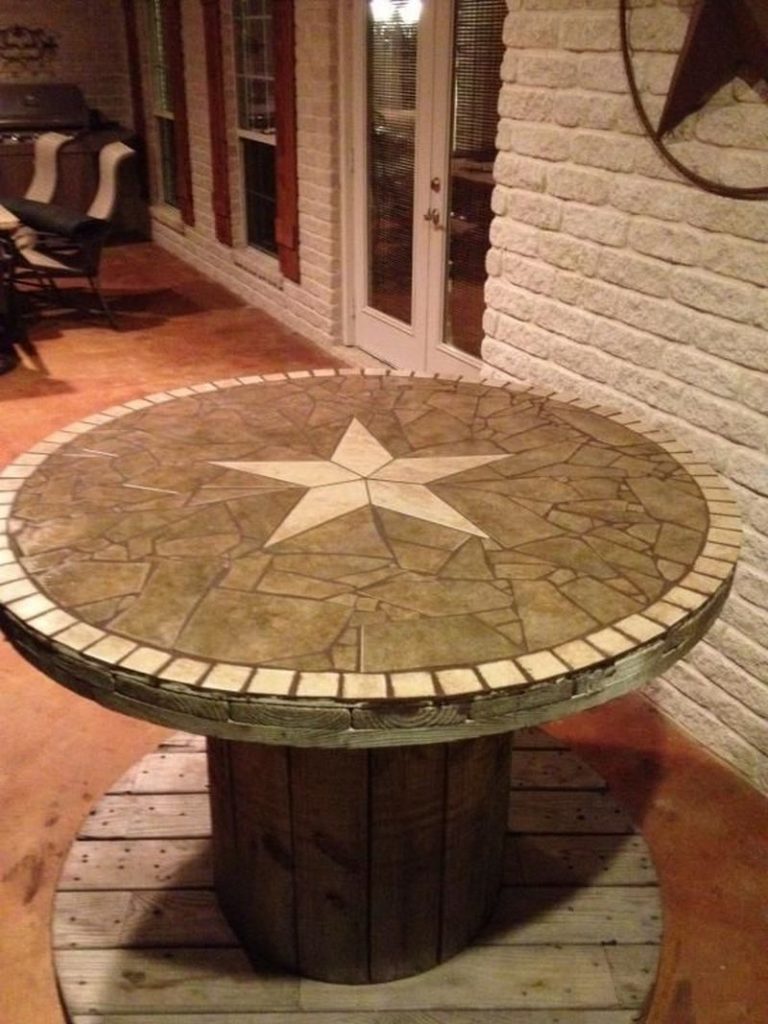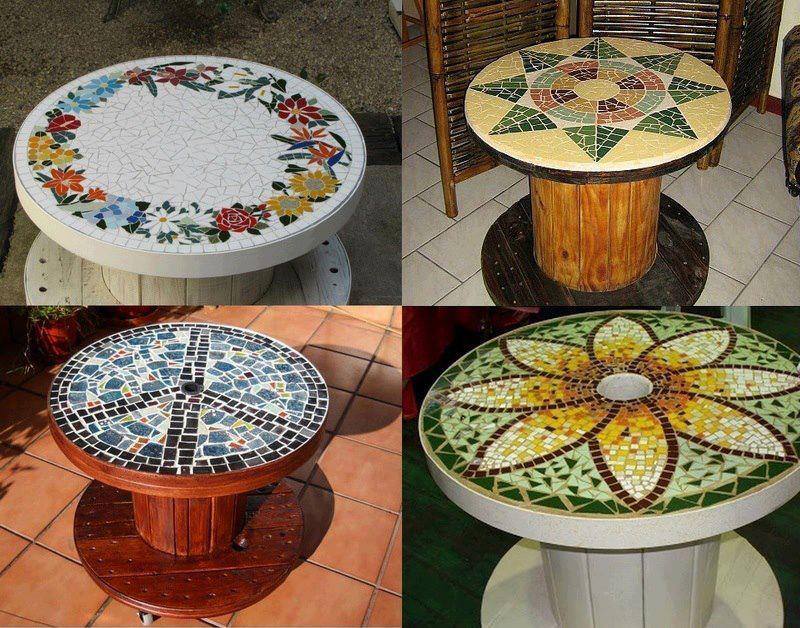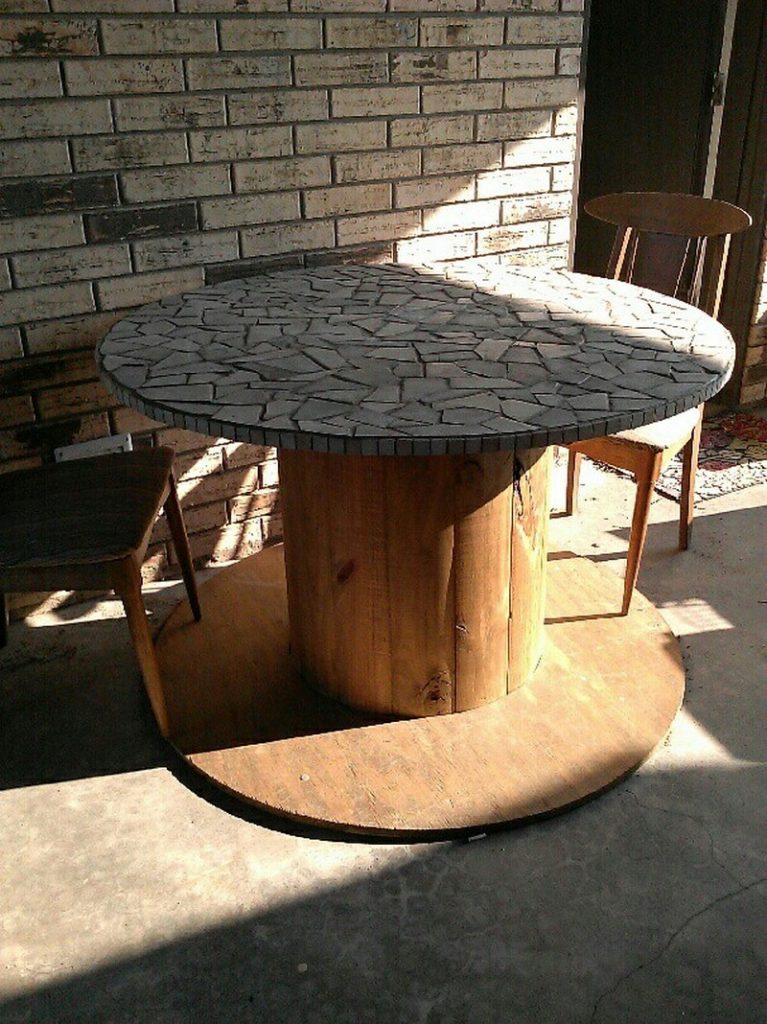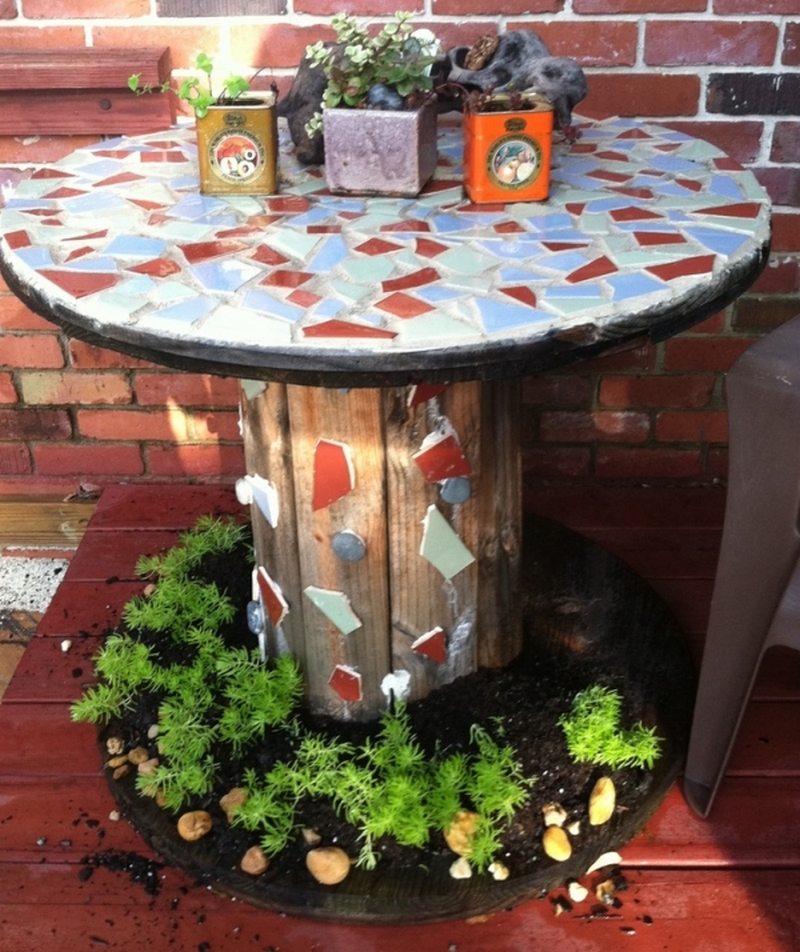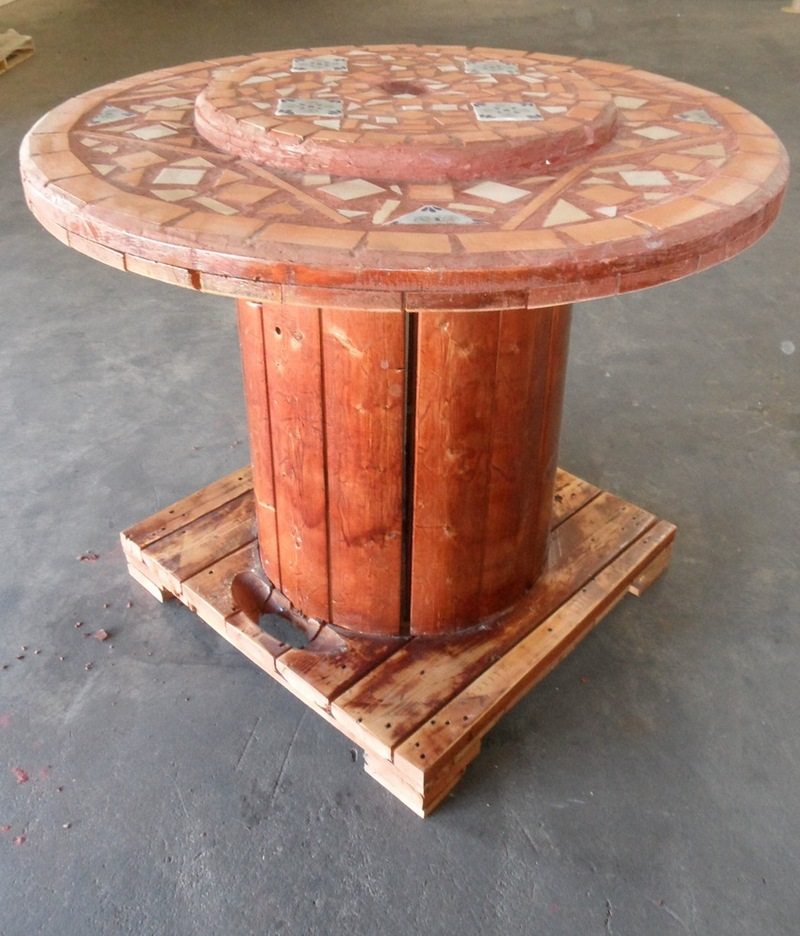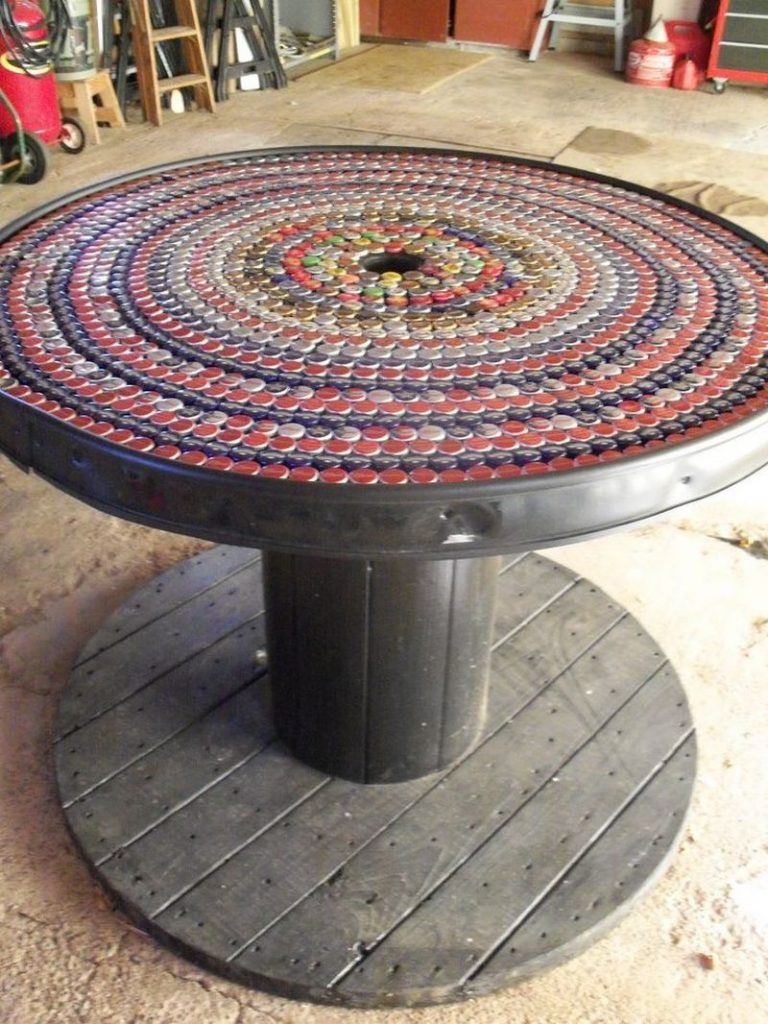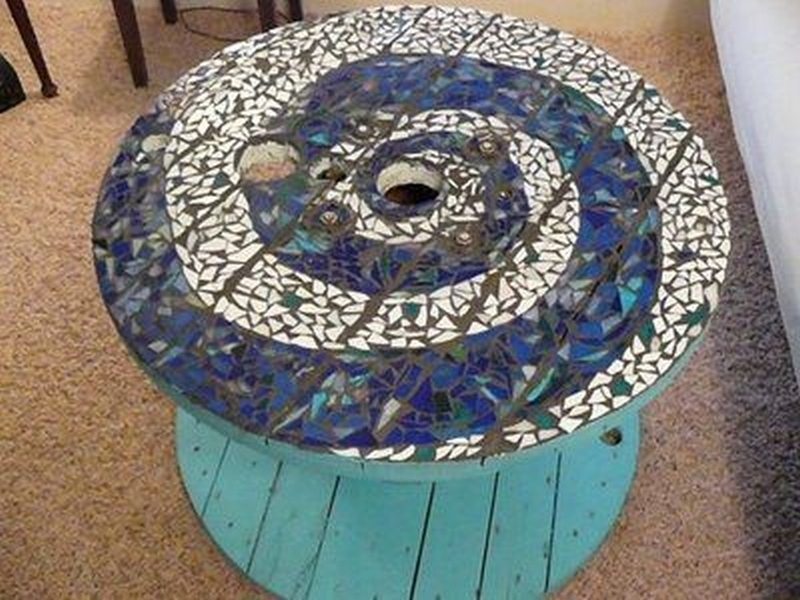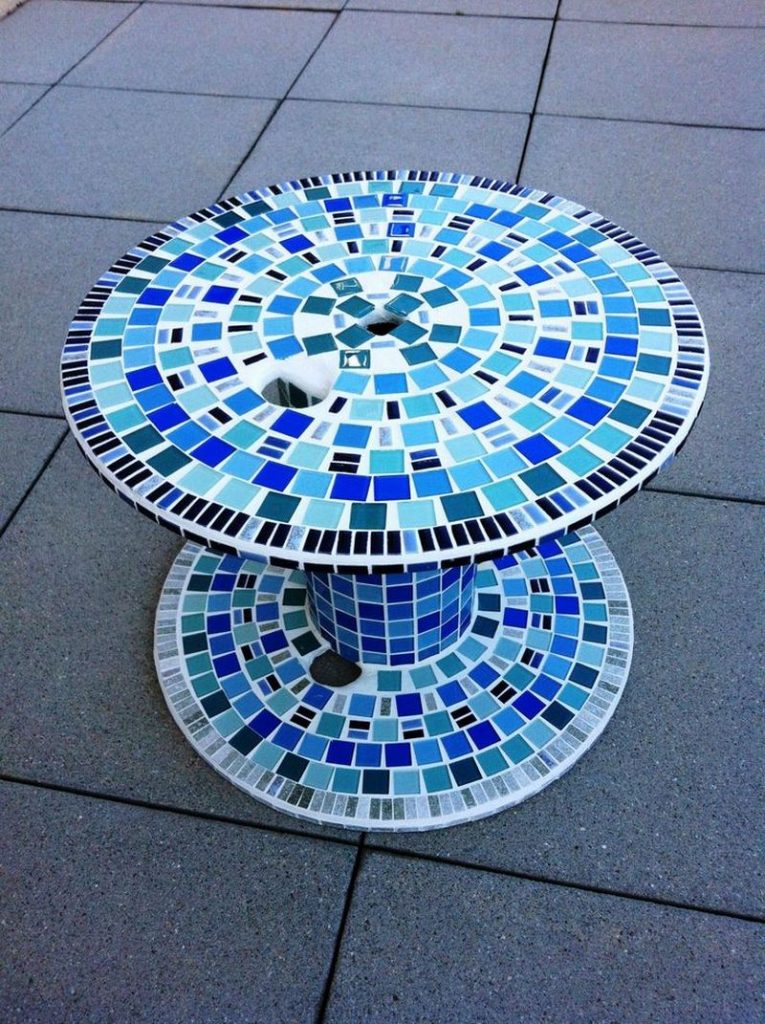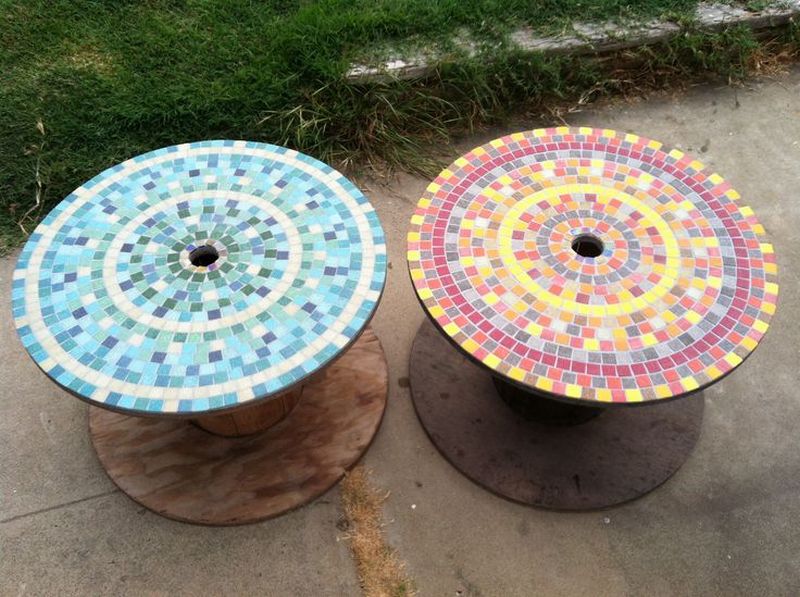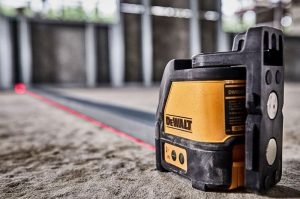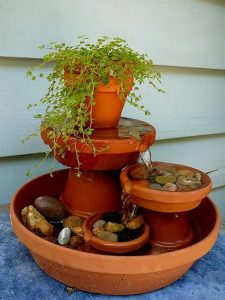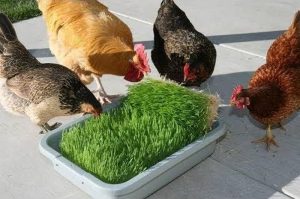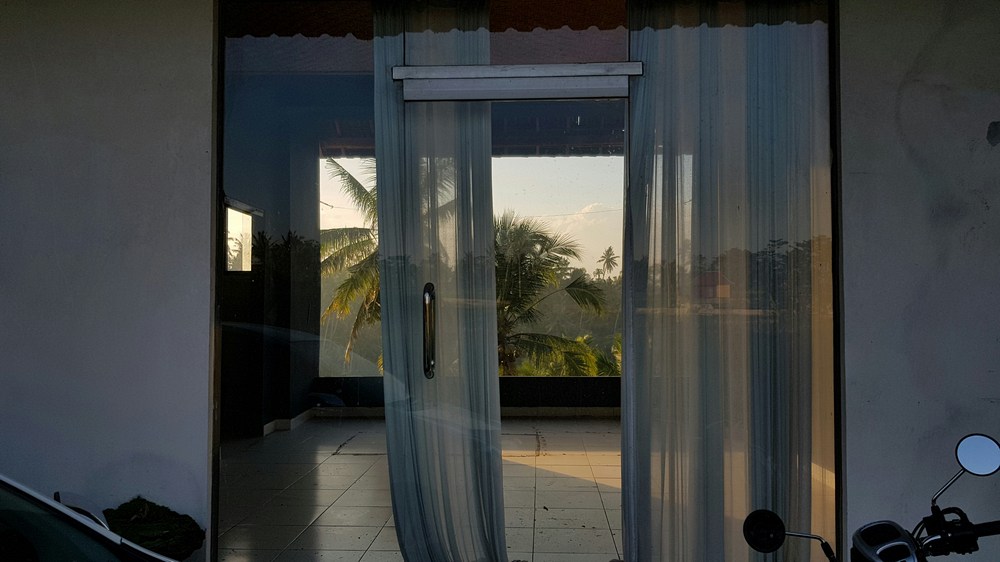Last Updated on June 8, 2023 by teamobn

Repurpose! These timber spools end up in landfills. Give one a new life by turning it into a great-looking mosaic table!
Use old, excess, or unwanted materials for your mosaic design such as china, colored tiles, or glass. You could also add some wheel casters under for easier mobility.
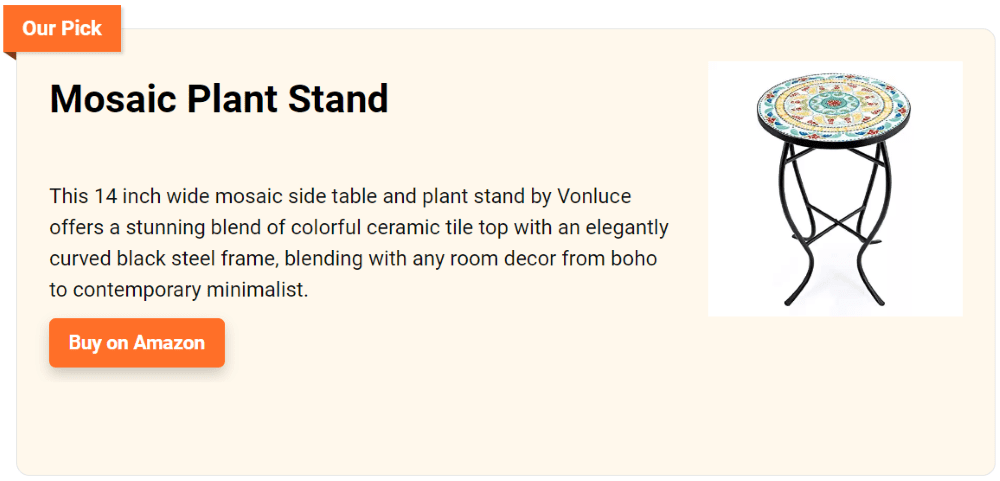
Mosaic tiles are mostly made from pieces of stone, colored glass, or other materials. They are small, flat, multi-colored, roughly square pieces. We frequently see them set as designs in rooms.
But among our favorite applications of mosaics tables are on furniture.
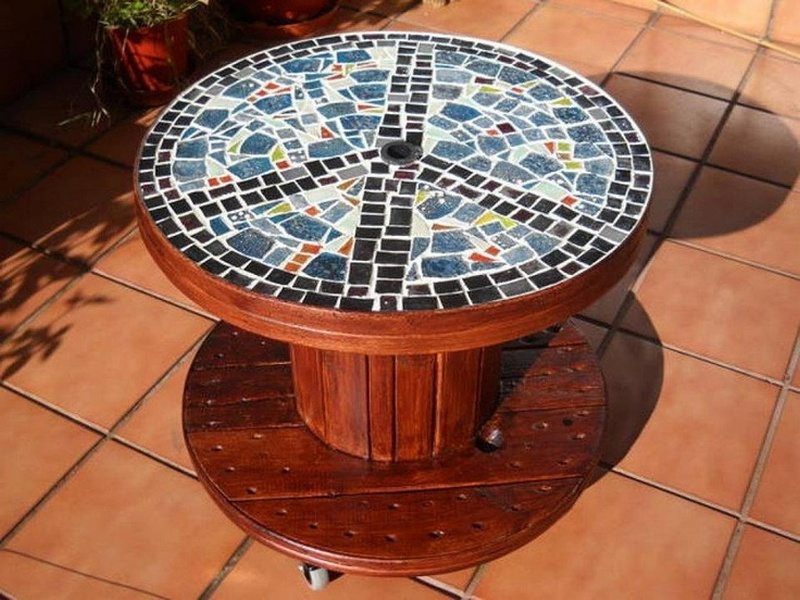
In fact, this piece of furniture would be perfect as a center table for your outdoor living area.
What are the materials needed to create a mosaic table?
From an old table that you have lying around the house, you can create your own mosaic table top. Prepare the tabletop and design the mosaic. Once your tiles are attached to your table, you can enjoy your unique new mosaic table.
What would your mosaic table look like?
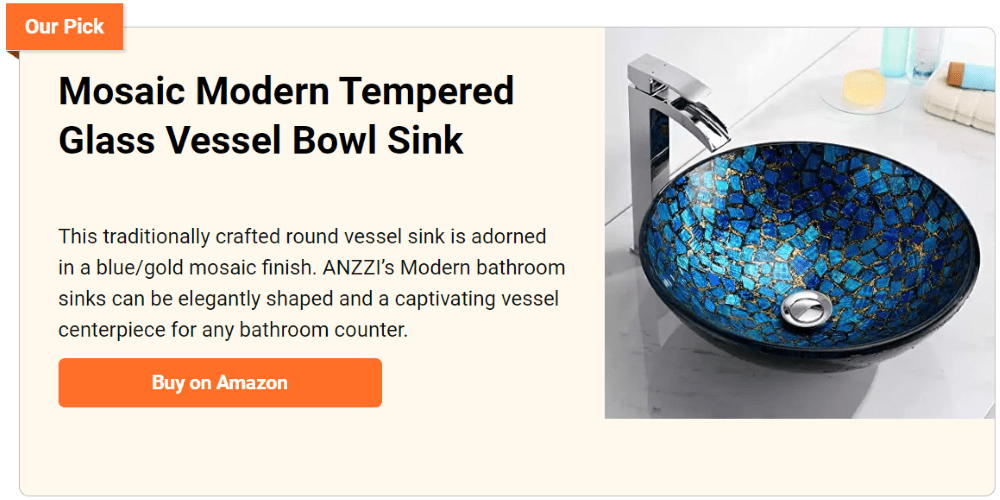
Materials:
- Ceramic/Glass for Mosaic
- Glue
- Wheel Casters
- Iron Plate
- Screws
- Paint
Tools:
- Sander
- Drill
Click on any image to start the lightbox display. Use your Esc key to close the lightbox. You can also view the images as a slideshow if you prefer 😎
